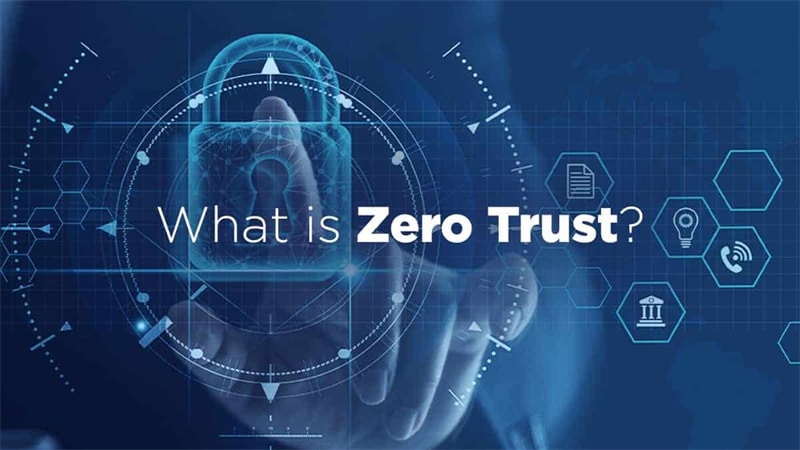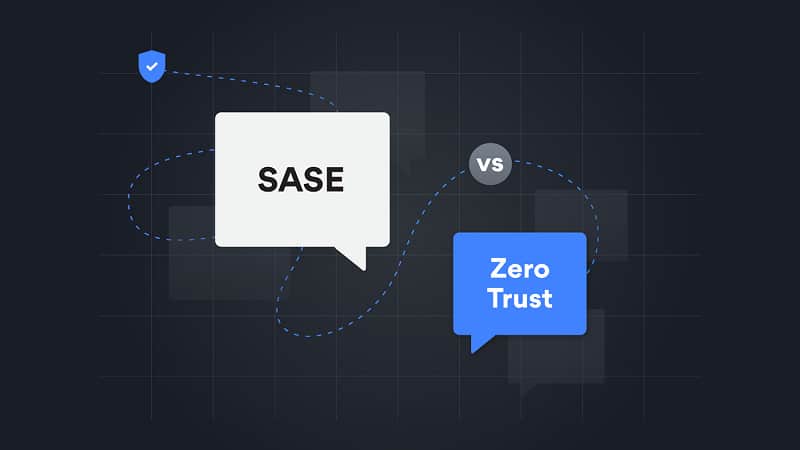The high demand for modern network and security technology has placed Zero Trust and SASE at the forefront of enterprise security solutions around the globe.
More businesses are transferring to remote and hybrid work systems. As a result, they face new work and security challenges created by work locations, dispersed workforce, resources, and security!
Many corporations dived into cloud services to make remote and hybrid systems more efficient. However, this also met an overwhelming record of attacks on enterprise networks that have resulted in organizations’ massive vulnerability of sensitive data.
Sensitive data of customers, clients, staff, and day-to-day business activities were on the verge of falling into the wrong hands and used to commit diverse crimes if they were not monitored and controlled.
A Forbes report shows a 65% increase in identified global losses was recorded due to different cyberattacks between July 2019 and December 2021.
Organizations have had to adopt a simple SASE architecture and Zero Trust strategy for a more flexible and reliable network and security model to combat these attacks or avoid threats.
But then, many still wonder which of these two should be better considered for companies that want to enjoy network security optimally.
Let’s start by finding out the different definitions of the two terms and the important SASE Use cases.
What is Zero Trust?

Zero Trust, just as the name implies, takes away trust before granting access to a network. The model uses a security scheme to determine which user or device should be given access to resources. The security framework leverages active security policies in a company to determine how enterprise assets should be accessed.
Zero Trust is a network security model that is based on the following principles:
- Zero Trust (No Trust) – Trust no one and nothing. Authenticate always.
- Verify always. Log and monitor access requests constantly.
- Grant least privilege access. Authorize the proper access level of success.
What is SASE?
On the other hand, SASE is a Cloud-Native proactive security strategy to offer consistent security to enterprise networks against threats and attacks. SASE is a complete framework with SD-WAN capabilities and a host of other network security functions.
Other key components of SASE are CASB (Cloud Access Security Broker), ZTNA (Zero Trust Network Access), FWaaS (Firewall-as-a-Service), SWG (Secure Web Gateways), NGFW (Next-Generation Firewall), and WAN services such as SD-WAN (Software-Defined WAN).
SASE has received overwhelming acceptance since its introduction in 2019 by Gartner. As traditional technology lacks the basic features of this framework, SASE reduces the attack surface to prevent threats and attacks.
The SASE architecture is structured mainly around four main principles as revealed below:
- Delivering network services. Offering connectivity majorly to Data Centers and Cloud providers.
- Offering network security solutions. SASE is geared toward delivering core security services.
- Identity-driven. SASE functions like Zero Trust with policies ultimately tied to user identity.
- Consumption-based
Zero Trust vs SASE Framework
Zero Trust is a strategy and not a specific network security technology. You can think of it as your “what” and SASE as your “how.”
Whether you are deploying a firewall, Anti-X solution, new monitoring software, or a DLP product, the Zero Trust principle is still applicable to all aspects of technology and its deployment.
On the other hand, SASE specifically deploys these security and networking technologies to achieve cloud-data security. Zero Trust and SASE are channeled towards securing an organization’s contextual and identity-based policy goals.
Zero Trust prevents potential threats to networks while SASE delivers robust security solutions to company management for entrepreneurs to embrace.
SASE focuses on delivering secure access at the edge. Zero Trust, however, monitors potential risks to security to prevent hampered business activities effectively.
It also aids continuous software monitoring and aligning software to attain the absolute welfare and technical goal. In contrast, the SASE solution enables a network to devise proactive measures to protect a network’s software system.
Zero Trust eradicates risks against entities — device or user — taking out inherent trusts. SASE, on its own, combines different technologies into a single network security solution.
With SASE, even when an identity has been previously proven, they still get authenticated before access. But, of course, all transactions, too, must be verified. SASE concentrates on how organizations deploy network security services.
The Zero Trust modem is a short-term strategy to secure the enterprise software environment, while SASE is a long-term architecture.
SASE requires you to invest in the strategy and gradually grow your network towards the SASE infrastructure. The model takes quite some time to fully complete the process as providers combine cloud services and technology solutions to protect an organization’s network.
Zero Trust and SASE Not Competing

SASE and Zero Trust are equally essential to an organization’s security as they help create a secure connection and protect. Business owners with remote workforces should leverage Zero Trust and view all networks utilizing the SASE framework.
The SASE framework makes managing the Zero Trust strategy easy and flexible. It also makes working every aspect of a company’s technology achievable. And while SASE acts more as a protection to your network than the old traditional security systems, Zero Trust provides better insight into your security architecture.
Zero Trust offers high value as it offers different attempts from requests to use data. The model helps managers understand which user or device is requesting access to a software network and using data.
However, SASE works as a manager on an enterprise network and oversees the total access of the network, thereby serving as a much better management opportunity for businesses.
Conclusion
As a wrap-up, entrepreneurs, employers, managers, and IT teams can better secure and make their network complexities easier and more flexible by combining both SASE and Zero Trust strategies in their security architecture when Zero Trust evacuates potential risks to a network but is highly valuable when implemented across the entire network. Then SASE steps in.
Zero Trust removes the likelihood of threats and attacks. SASE, on the other hand, helps business owners create a system that identifies risky spots and circumvents potential attacks. In addition, SASE creates comprehensive analytics of network data. And aside from creating a higher level of security, it also saves costs.
Zero Trust and SASE should be considered as complements to each other rather than competitors. And Zero Trust is part of the broader architecture of the SASE cloud services.
